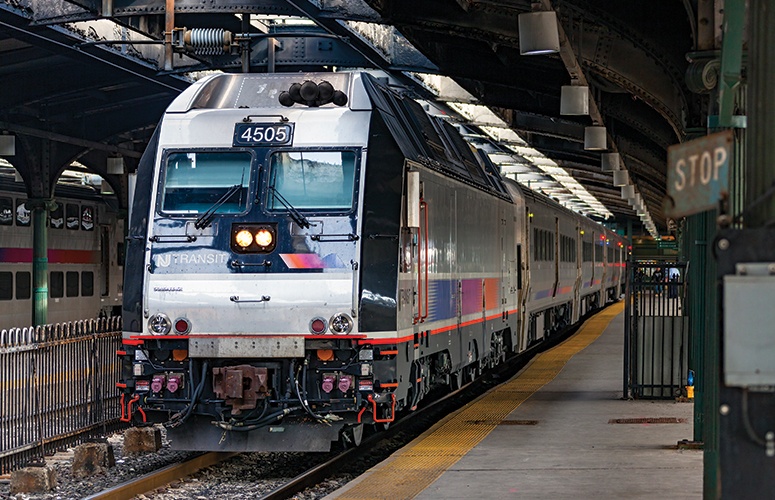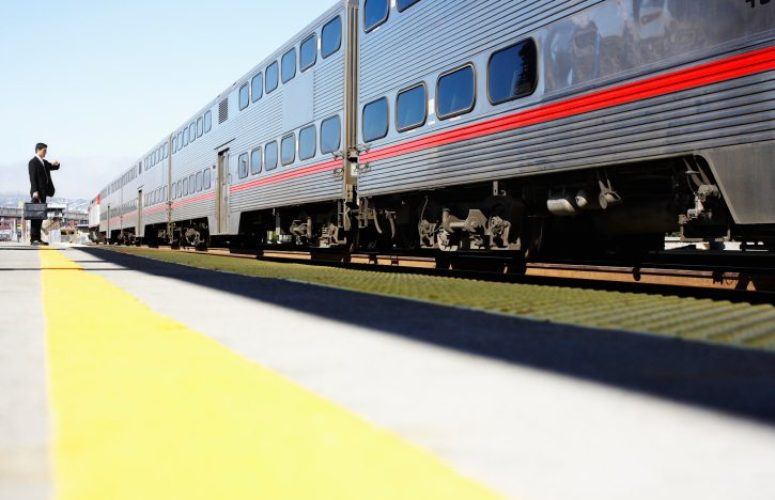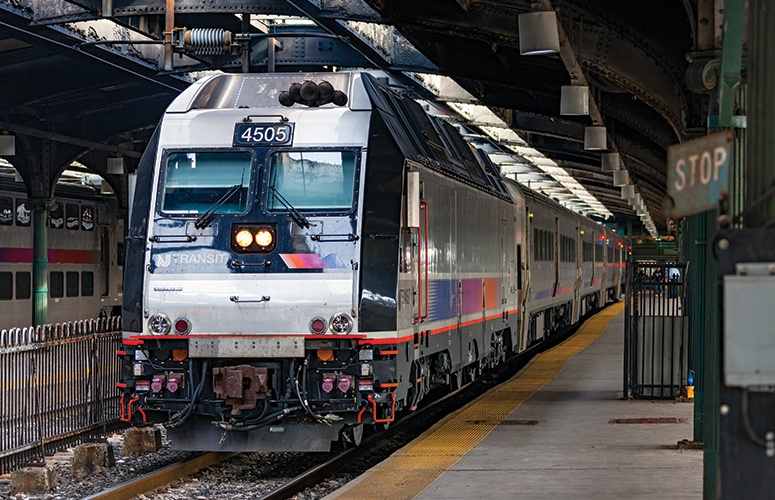
Keeping NJ Moving
Gateway tunnels and other infrastructure projects are critical to the economic health of the state, the region and the nation.
By Vince Baglivo, Contributing Writer On May 3, 2019New Jersey is known as the “Crossroads of the American Revolution” for the number of significant battles fought here on the road to independence. Today, the state is at the center of a new fight with enormous implications for the economic health and well being not only for New Jersey, but regionally and nationally as well. From the Gateway tunnels to other impactful infrastructure projects statewide, the state’s ability to efficiently, effectively and safely move both people and products is critical to economic success.
In the February issue of 825 News, a publication serving the members of International Union of Operating Engineers Local 825, Business Manager Greg Lalevee highlighted 66 construction contracts worth $1.1 billion that were bid in recent months, covering all of the local’s New Jersey and New York counties, and providing good work opportunities for its members.
Lalevee added that one project that does not appear on any list yet may be the most important – the Gateway Hudson River tunnels. “These tunnels move 13 percent of the New York City workforce daily,” Lalevee pointed out. “Nearly one-third of the nation’s GDP passes through them.”
According to the Regional Plan Association (RPA), shutting down the Hudson River tunnels to repair the damage caused by Superstorm Sandy without having new tunnels already built would have far-reaching consequences across many sectors of our regional and national economy.
A report released by RPA in February, “A Preventable Crisis: The Economic and Human Costs of a Hudson River Rail Tunnel Shutdown,” noted that a shutdown without a new tunnel would cost the national economy $16 billion, $1.5 billion in federal tax revenue, and $1 billion in state tax revenue outside of New York and New Jersey. It would also reduce home values by $22 billion, and lead to decreased economic productivity, job losses, increased congestion and crashes across the northeastern United States.
At the time of the report’s release, RPA President Tom Wright said that “Every day that we aren’t building the Gateway project, we’re one day closer to real economic and social calamity that would be felt across the Tri-State area and beyond. From job availability to housing prices, the price of household goods, and even the cost of air travel, every sector of our economy would feel the effects of a partial shutdown of the trans-Hudson tunnel.
Wright added, “Residents would feel its impact across many facets of their lives. It is a slow-moving, predictable crisis which we have the capacity to prevent. It is time to fully fund the Gateway project now.”
Robert Lewandowski, communications director for the New Jersey Laborers Union, a 20,000-member affiliate of the Laborers’ International Union of North America (LiUNA), says it’s tough to mention the New Jersey economy and not discuss its emergence as a distribution hub. “All along the major arteries, we are seeing more warehousing and industrial buildings,” Lewandowski points out. “This is in line with changes to our economy. It is a positive for New Jersey, but it also puts a heavy reliance on transportation infrastructure that received a D+ grade from the American Society of Civil Engineers.”
Lewandowski says that the New Jersey Department of Transportation’s (NJDOT) I-295/I-76/Route 42 Direct Connect project is an important initiative to break north-south and east-west bottlenecks. “The Pulaski Skyway, the I-287/I-78 and I-287/202/206 Interchange improvements were long overdue, as were many local and county projects that were identified but lacked funding,” Lewandowski adds. “The recently-passed P3 legislation may help break another bottleneck, and that is how to fund investment in our infrastructure. The higher-ed P3 program blazed a trail, but it is good to have options for other work, too.”
Local 825’s Greg Lalevee also gave high marks on the signing of the P3 legislation to support public-private partnerships and create good-paying jobs. “Our infrastructure systems are in dire need of repair and funding, and public-private partnerships offer the private sector an effective and credible way to contribute and invest in them and other key projects,” Lalevee notes. “The bill’s provisions to create good-paying jobs, ensure prevailing wage requirements are met and encourage project labor agreements will help boost employment in our state and will directly improve the lives of hardworking New Jerseyans.”
In December, NJDOT and the New Jersey Turnpike Authority (NJTA) announced more than $1.1 billion in construction contracts for 2019, with the goal of delivering smoother trips for New Jersey’s motorists and a robust investment for the Garden State’s economy.
NJDOT’s plans included more than $500 million in construction contracts to be issued in the first quarter of 2019. NJDOT is also accelerating its first quarter construction program, increasing contract total value by $50 million. The NJTA issued more than $600 million, adding over $400 million in new projects currently under design, and has identified more than $400 million in additional construction work in 2019.
NJDOT highlights include major repaving projects in Bergen and Morris counties on Route 80, on Route 35 in Middlesex and Monmouth counties and on Route 55 in Cumberland, Salem and Gloucester counties.
NJTA will be reconstructing bridge decks at milepost 141 and 142 on the Garden State Parkway in Union County. Turnpike bridges at mileposts 30.75 (Camden County) and 33.94 (Burlington County) will be lengthened to prepare for the future widening of the southern portion of the New Jersey Turnpike.
At the time of the announcement, Gov. Murphy stated that “New Jersey’s future depends on its transportation infrastructure. Advancing these projects sends a message to New Jerseyans that we are increasing value for their tax dollars. It also tells the business community that New Jersey is open for business and will make the infrastructure investment necessary to attract the best of the private sector.”
To access more business news, visit NJB News Now.
Related Articles:





